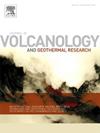The link between geothermal resources and subsurface geological structures in the magma-rich Ethiopian rift: A case study of the Boku geothermal prospect
IF 2.3
3区 地球科学
Q2 GEOSCIENCES, MULTIDISCIPLINARY
Journal of Volcanology and Geothermal Research
Pub Date : 2025-04-08
DOI:10.1016/j.jvolgeores.2025.108333
引用次数: 0
Abstract
In the volcanically and tectonically active zones of the main Ethiopian Rift, geothermal resources are primarily influenced by subsurface geological structures along the rift valley floor which contains multiple volcanic complexes. However, the specific subsurface structures of these volcanic systems and their relation to the distribution of shallow geothermal resources remain inadequately understood. This study utilizes gravity data from the Global Gravity Model Plus2013 and ground magnetic data to investigate the role of subsurface volcanic features in the occurrence of geothermal resources within the Boku Geothermal Prospect (BGP). Interpretation of gravity and magnetic anomalies, along with derivative maps, suggests the presence of a potential geothermal heat source beneath the Boku geothermal area. The 2D joint gravity and magnetic models, combined with gravity and magnetic anomalies, indicate a dense mafic intrusion at approximately 4.5 km depth beneath the BGP, which is likely the heat source for the geothermal system. Linear features (trending NNE-SSW and NE-SW), interpreted as faults and weak zones from derivative maps, appear to play a crucial role in hydrothermal circulation by acting as conduits for transporting hydrothermal fluids, facilitated by these faults and weak zones. Our 2D models reveal interactions between Quaternary faults within the Wonji Fault Belt (WFB) and the subsurface mafic intrusion, elucidating the mechanism by which thermal heat is transported to the shallow subsurface and surface. The surface thermal manifestations are strongly correlated with the structures detected by Horizontal Derivative and Analytic Signal analyses, indicating that the BGP area is structurally controlled. This complex faulting system provides extensive permeability and favorable conditions for the occurrence of geothermal resources within the BGP.
富含岩浆的埃塞俄比亚裂谷地热资源与地下地质结构之间的联系:博库地热勘探区案例研究
在埃塞俄比亚主裂谷的火山和构造活动区,地热资源主要受裂谷底部含多个火山复合体的地下地质构造的影响。然而,这些火山系统的具体地下构造及其与浅层地热资源分布的关系尚不清楚。利用全球重力模型Plus2013的重力数据和地面磁数据,研究了地下火山特征在博库地热勘探区内地热资源赋存中的作用。对重力和磁异常的解释以及衍生图表明,在Boku地热区下方存在潜在的地热热源。二维联合重磁模型结合重磁异常表明,在BGP下方约4.5 km深度处存在致密的基性侵入,这可能是地热系统的热源。线性特征(走向NNE-SSW和NE-SW)在衍生图上被解释为断裂和弱带,在这些断裂和弱带的促进下,作为热液流体输送的管道,似乎在热液环流中起着至关重要的作用。我们的二维模型揭示了元吉断裂带第四纪断裂与地下基性侵入的相互作用,阐明了热量向浅层地下和地表传递的机制。地表热表现与水平导数和解析信号探测到的构造有较强的相关性,表明BGP地区受构造控制。这种复杂的断裂系统为BGP内广泛的渗透性和地热资源的赋存提供了有利条件。
本文章由计算机程序翻译,如有差异,请以英文原文为准。
求助全文
约1分钟内获得全文
求助全文
来源期刊
CiteScore
5.90
自引率
13.80%
发文量
183
审稿时长
19.7 weeks
期刊介绍:
An international research journal with focus on volcanic and geothermal processes and their impact on the environment and society.
Submission of papers covering the following aspects of volcanology and geothermal research are encouraged:
(1) Geological aspects of volcanic systems: volcano stratigraphy, structure and tectonic influence; eruptive history; evolution of volcanic landforms; eruption style and progress; dispersal patterns of lava and ash; analysis of real-time eruption observations.
(2) Geochemical and petrological aspects of volcanic rocks: magma genesis and evolution; crystallization; volatile compositions, solubility, and degassing; volcanic petrography and textural analysis.
(3) Hydrology, geochemistry and measurement of volcanic and hydrothermal fluids: volcanic gas emissions; fumaroles and springs; crater lakes; hydrothermal mineralization.
(4) Geophysical aspects of volcanic systems: physical properties of volcanic rocks and magmas; heat flow studies; volcano seismology, geodesy and remote sensing.
(5) Computational modeling and experimental simulation of magmatic and hydrothermal processes: eruption dynamics; magma transport and storage; plume dynamics and ash dispersal; lava flow dynamics; hydrothermal fluid flow; thermodynamics of aqueous fluids and melts.
(6) Volcano hazard and risk research: hazard zonation methodology, development of forecasting tools; assessment techniques for vulnerability and impact.

 求助内容:
求助内容: 应助结果提醒方式:
应助结果提醒方式:


